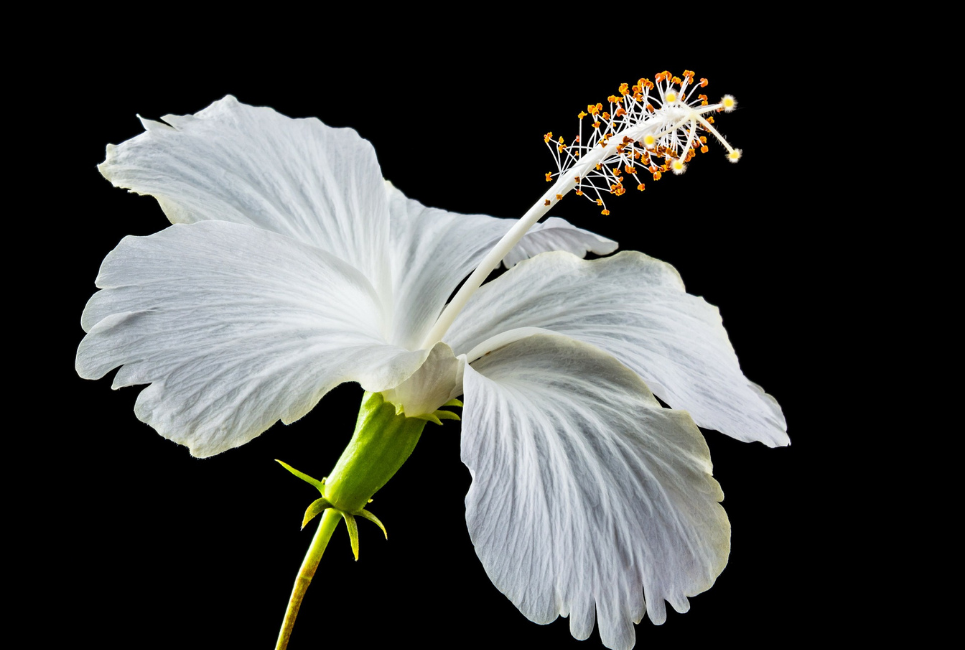- Best Stump Killer To Consider for Your Yard - January 5, 2024
- The 7 Best Spading Fork Options - December 21, 2023
- Best Head Planters – Top 24 Options You Will Love - December 16, 2023
You will have to see the elegant contrast the White Hibiscus (Hibiscus rosa-Sinensis) can create with the dark green foliage as it adds a white tropical hue splash when blooming! It is a stylish plant with a lush hedge or screen. Use the plant to fill spaces between windows or cover unattractive side yard fences.
Let the white hibiscus welcome you home with their happy disposition and vibrant flowers, and greet your guest by planting them near pathways or driveway. While the tropical hibiscus adds curb appeal to your home, it also creates an expression that will fascinate hummingbirds and butterflies.
How to Identify White Hibiscus
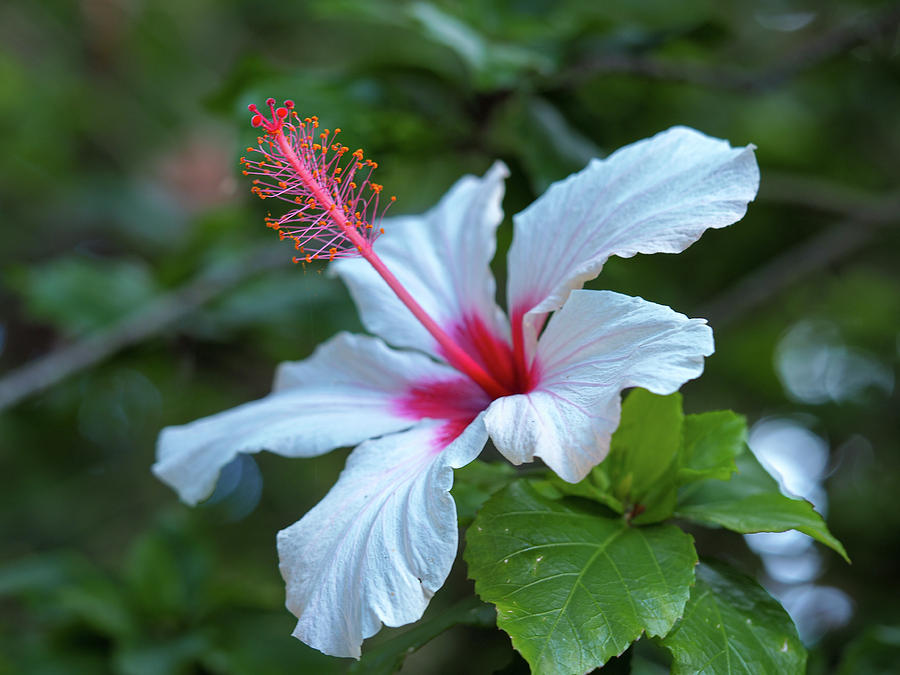
As one of the best flowering plants, White Hibiscus is a perennial flowering plant and an evergreen shrub native to Tropical Asia. While it has commercial and ornamental values, White Hibiscus produces stunning flowers throughout the year. It can grow up to five meters and are impeccable for a sunny balcony and indoor garden.
White Hibiscus is a symbol of love and beauty. People send these plants as an ideal gift for sending respect, passion, and love to their loved ones. In addition, people use the plant’s flowers and other parts to make medicine. The climate conditions and their variety determine the flowers’ fragrance.
White Hibiscus is one of the most beautiful and popular flowers. Their flowers are large, with about five petals. The color varieties of these plants can be purple, yellow, peach, orange, red, or pink. Their breadth is about 4 to 18 cm and can be a double flower or single flower for flowers from different hybrids and cultivars.
White Hibiscus is a perfect choice for a sunny slope, prefers total sun exposure, and loves the heat. Many people can do no wrong with White Hibiscus since they are an excellent summer color source. In addition, you will love this plant if you love the view of white flowers in the landscape.
- Bloom color: White
- Periodic blooms year-round
- A perfect source of summer color
- Attracting hummingbirds and butterflies through large tropical foliage
- It serves as a stylish hedge or screen and is ideal for covering unsightly side yard fences
How to Plant White Hibiscus

More than 200 species of hibiscus exist, varying in cold hardiness, color, and size. Blooms can be bi-color, purple, blue, orange, yellow, pink, red, or white. This piece focuses on White Hibiscus, which can create a tropical setting by your swimming pool, screen an unappealing fence, add interest on a bare wall, or be used to create a hedge or specimen shrub.
Preparing to Plant White Hibiscus
While we intend to focus on White Hibiscus, we recommend choosing a hibiscus plant variety that will thrive in your local environment since we have different appearances and colors. There are hardy and tropical hibiscus bushes. As hybrids, the hardy hibiscus can flourish well in cold areas with low freezing temperatures in the winter. The tropical hibiscus can grow in warm weather areas and year-round temperatures above 50 degrees.
- Hardy hibiscus can hold their blooms longer than their tropical counterpart. However, they don’t have enough bushes and tiny flowers. These types come in hues of pink, white, and red.
- Growing White Hibiscus requires certain conditions when growing from cuttings to thrive well. We recommend not taking this route if you’re new to growing any hibiscus or a gardening newbie.
Soil Preparation
- Ensure you plant your White Hibiscus in a sunny spot. You can plant them close to prevent damage to the plants or block some of the wind if growing in windy areas.
- Use pH testing strips to the soil pH. A slightly acidic pH soil is preferable for White Hibiscus. Essentially, it needs to be slightly below 7.0 pH.
- Use sulfur to lower the pH and lime to raise it while adjusting your soil pH.
- Organic matter like compost is also perfect for adding to heavy clay or overly sandy soils. With that, it will improve the soil’s moisture retention and aeration, nutrient levels, and drainage. Put some compost to the soil surface and mix it into six inches depth or more using a gardening fork or tiller. Get a slightly acidic and well-drained potting mixture if you intend to plant your white Hibiscus in pots.
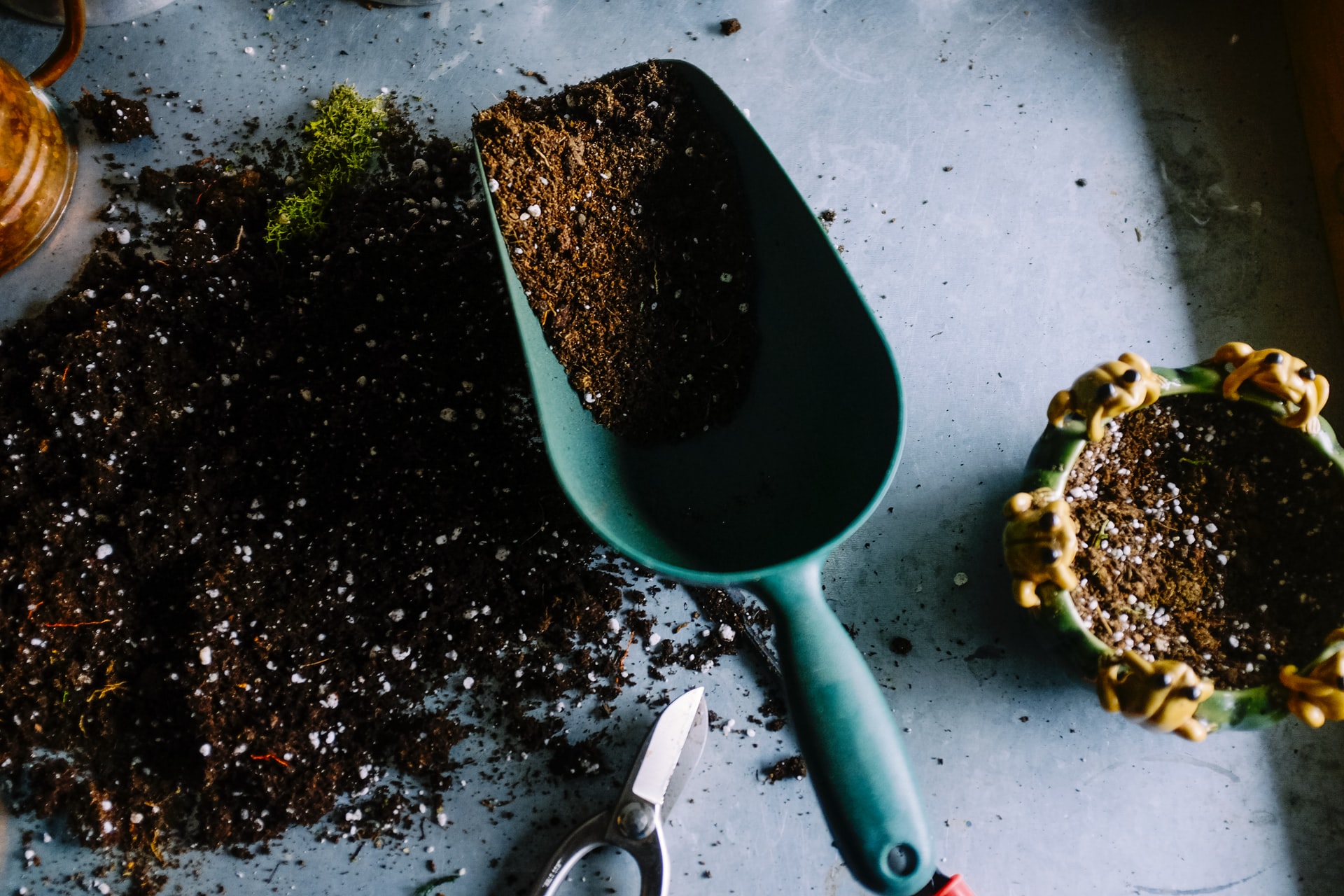
Planting and Care
- Ensure that your White Hibiscus starter plant sits at a similar height when sitting in the pot by digging a planting hole. Give the plants about three feet of space between them when planting many hibiscus plants. You can plant White Hibiscus in the fall, summer, or spring.
- Use well-drained soil to fill the hole halfway after putting your White Hibiscus starter plant in it.
- Let the soil remain over the roots by watering the plant.
- Apply more soil in the rest of the hole and allow the soil to settle further by watering again.
- Water for about one inch a week, and your White Hibiscus may need supplemental irrigation during rainy weather.
- Encourage new growth by pruning away old flowers. Also, manage the shrub size by pruning more as required.
- Use low-phosphorus and high-nitrogen fertilizer to fertilizer your White Hibiscus during the growing season. Experts’ recommendation is to fertilize the plant twice a month during the growing season. The growing space must be about one pound of nitrogen per 1,000 square feet.
- Wash your plant with insecticidal soaps or spray it with horticultural oil as required to eliminate mites or other insects.
How to Grow White Hibiscus from Seed
It can be a bit of stress to grow the White Hibiscus from seed. However, the outcomes are floral, beautiful additions that will brighten your garden or home. Therefore, it is essential to follow these steps to plant White Hibiscus from a seed.
Sowing Seeds Indoors
- Let your White Hibiscus seeds take about 10 to 14 weeks indoors before the end of the spring frost date, and use a seed starting kit.
- Speed up germination by allowing the seeds to be in room temperature water for around eight hours.
- Your seed must be about 1/4-inch deep when sowing in seed-starting formula.
- Your soil needs to be moist at approximately 70 to 75 degrees.
- You will see seedlings appearing in around 14 to 21 days.
- Ensure you prepare a sunny windowsill with light when seedlings appear. Have about three to four inches of the grow seedlings under turned-on fluorescent plant lights for 16 hours a day. You can put it off during the night for about eight hours. Turn up your light as White Hibiscus grows taller. The process will not work well if you use incandescent bulbs since the heat will be intense. A dark period is suitable for some plants to grow. As such, leaving lights on for a whole day is not recommended.
- You won’t need much fertilizer for seedlings and use a starter solution three to four weeks old.
- If you grow in small cells, you may want to transplant your White Hibiscus seedlings to about three to four-inch pots. You will do this when they have two leaves before transplanting the plant to the garden. With that, your plant will have sufficient space to grow strong roots.
- Ensure that the seedling plants are hardened off before transplanting to the garden. Move the plants to a sheltered space outdoors for one week to accustom them to outdoor conditions. First, ensure adequate protection from hot sun and wind. Bring the pots indoors or cover them if you notice night frost threats. The White Hibiscus cells will toughen with the hardening process and decrease transplant scalding and shock.
Planting Potted Plants in the Garden
- Prepare good rich, moist organic soil for a planting location.
- Turn the soil under a 6 to 12-inch depth to prepare the bed. Don’t forget to eliminate debris and rake to a perfect level.
- All gardens benefit from adding organic matter like well-rotted manure, compost, or leaf mold, and currently constructed areas will find it critical.
- Reduce transplant shock by planting in the late afternoon or cloudy day.
- Ensure that the hole you will dig for each plant is large enough for the root ball.
- Loosen the root ball gently as you unpot your White Hibiscus using your hands to promote excellent root growth.
- Use the surrounding sol level for the top of the root ball. Then, fill the root ball top with soil. Use your hands to compress the soil firmly.
- Put a light mulch layer on the soil and water thoroughly. Doing so will reduce weeds while conserving water.
How to Propagate White Hibiscus
You can propagate your White Hibiscus in your home garden. Therefore, several growers similarly propagate these varieties of hibiscus. However, growers find it easier to breed hardy hibiscus, and you can have successful growth with a bit of knowledge about propagating hibiscus.
Before moving on, please be aware that you will have identical leaf, form, and flower with a plant grown from a cutting off the parent plant. If you are ready to know how to propagate White Hibiscus, let’s dive right into it!
- Hardwood cuttings you take in the early spring or last winter month are the easiest way to propagate hibiscus. This time is perfect for pruning. Prepare a cold frame or glasshouse as a makeshift for preventing the cutting from drying out and protecting them from the wind. You can also encourage root growth by providing the extra warmth needed.
- Ensure that the wood you select is straight, strong, more prominent, and has pencil thickness. You will get twisted, weak plants from twisted, weak stems. Therefore, the better the wood, the better the plants. Cut off the leaves using secateurs or bend them back against the stem to remove all the leaves. Never tug or pull them, especially if doing so can tear the bark, or they are a bit dry.
- Make about 45 degrees cut with a sharp knife through an eye at the cutting base. Ensure to have one even stroke by slicing through into it. It would help if you had about 12.5 to 15 cm length when you trim the cutting.
- A rooting medium of a bit of peat mixed through coarse river sand is suitable for hardwood cuttings. Many growers claim to have success using commercial propagation. A 15 cm pot is perfect for about 30 cuttings.
- You can then pot the cuttings into larger pots with potting mixture after cutting them. You can soak the cuttings in a bucket of seaweed solution first to remove the rooted cuttings from the containers. With that, you can be sure of not damaging their roots.
White Hibiscus Growing Conditions
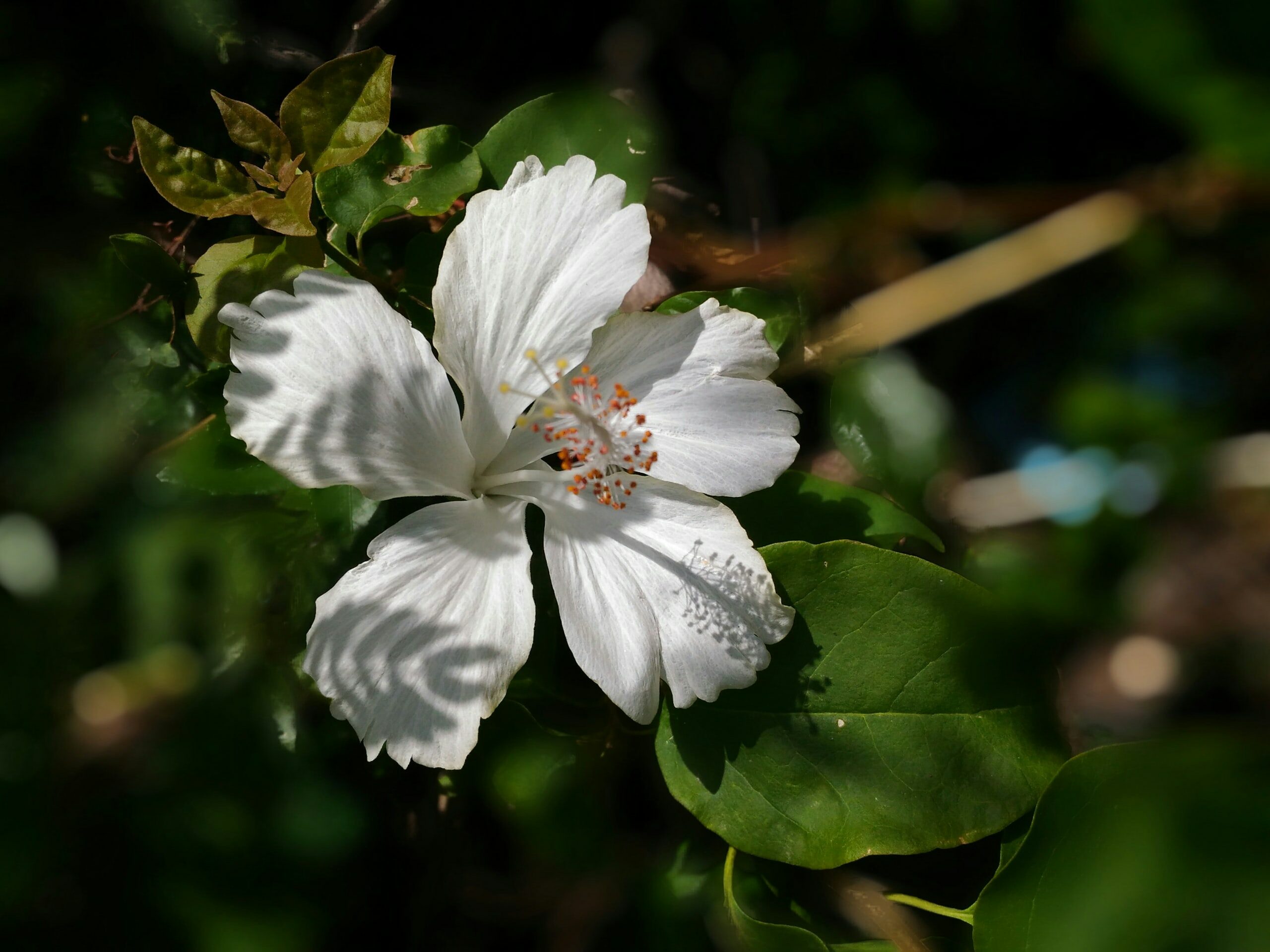
White Hibiscus grows well in humid, warm, and moist conditions, especially 60 to 90 degrees. However, if planted in heavy soil or low temperature, the plant will struggle. Growers need to check blooms and foliage regularly for signs of disease or pest and treat any issues with pesticides.
White Hibiscus Potting & Soil
Your White Hibiscus will thrive well when you choose the suitable soil for it. Any soil little below a seven on the pH scale and slightly acidic is perfect for White Hibiscus. Get a pH testing strip online to test the pH scale of the plant’s soil. You can also send the soil sample to a testing lab. We recommend adding compost rich in organic matter to improve the soil’s acidic levels if your soil is not up to par with White Hibiscus’ ideal pH scale.
Similarly, you can get dolomite lime or garden lime if your soil has a high level of acid to treat it. Ensure that your soil has moisture-retaining qualities and is well-draining. Another recommendation is to stay away from using heavy soil like clay-based mix or compost. You may have to deal with clogged soil, which can lead to plant root rot.
White Hibiscus Water Requirements
White Hibiscus loves moist but not soggy soil. That is why it could be pretty challenging to find the right watering balance if you are a new grower. However, if you are new to growing the plant, our team gets you covered. So just read on and take action.
You may find it hard to make a planned schedule for watering your White Hibiscus. While some growers water their plants once a week, you may have to water your plant more or less constantly if you live in a region with cooler or warmer temperatures.
Ultimately, we recommend using a touch test method to understand when you need to water your plant. For example, you can use a finger or a popsicle stick to make about two to three inches hole in the soil every few days. You will know it is the perfect time to water your White Hibiscus if the topsoil is completely dry and the undersoil is slightly moist.
Note – Water your plant late in the evening or early morning when there is no direct sun. Watering your White Hibiscus during direct sunlight hours could be counterproductive, except it is seriously required. With this, the water may evaporate before your plant benefits entirely from it.
White Hibiscus Light Requirements
Start your White Hibiscus light requirements with the sun. First, ensure that your plant gets lots of sun. The more direct sun the plant receives, the best the White Hibiscus will bloom. Prime flowering needs about six to eight hours of sunlight.
However, a little more shade is also perfect for the plant if you are okay with a few flowers during the summer. The morning sun is not as strong as the afternoon sun. Therefore, your White Hibiscus will have more flowers with a spot that has sun in the afternoon and morning shade than a spot with shade in the afternoon and sun in the morning.
Best White Hibiscus Fertilizer
A pivotal aspect of caring for White Hibiscus is using fertilizer. You must fertilize your plant during its blooming and growth periods, not when it is dormant or during cooler months.
Many fertilizers are on the market to care for White Hibiscus, but a granular fertilizer will work better than a liquid one since they have slow-releasing properties. As such, your plant will continue to get the nutrients it needs for a long time. The most critical nutrients for a White Hibiscus are the NPK nutrients. Ensure that the fertilizer you want to purchase has a tiny amount of phosphate (P), a higher amount of potash (K), and nitrogen (N) in the soil.
Best Companions for White Hibiscus
Are you looking to steal all of the attention with your plant design? Do you even think your White Hibiscus need companion plants? Then, if you want to complement your landscape designs with some ideal companions, we have some ideas for you.
Let us look at some of these suggestions.
Turtlehead

Turtlehead has unusual flower shapes as a native perennial that is the same with snapping turtle’s head. However, when it spreads into fall from late summer, this plant forms white, rose, or pink flowers with its upright stem form dense colonies. Turtlehead can tolerate wet, heavy soils and thrives well in some shade. However, adequate moisture is enough for this plant that can withstand full sun.
Miscanthus
Miscanthus is beautiful when the sun backlight it, whether setting or rising. As prized ornamental grasses, this plant boasts an assortment of fineness, decoration, and widths with its arching grassy foliage of dense clumps. Also, rising above the flowers and leaves that last impressively through the winter are dramatic erect plumes of flowers. Plenty of room in light shade or sun is perfect for the plant and site it in excellent drainage.
Joe Pye Weed
As a prairie native and a showstopper, Joe Pye Weed produces puffy, massive flower heads during late summer. While drought works well with the plant, it can tolerate moist soil due to its extensive root system. The plant can grow about four to six feet tall as a large plant. Close relatives are white snakeroot that can reach about five feet tall and hardy ageratum that grows to about two feet tall. These combinations with White Hibiscus are perfect for cottage or naturalistic plantings.
White Hibiscus Disease and Common Problems
Thrips
These are straw or black-colored, tiny needle-thin insects. They will attack stems, leaves, flower petals and suck the plant’s juices. Additionally, the White Hibiscus will have leaf surface silvering or a discolored, stippling flecking. Thrips can transmit various diseases from one plant to another. Sheets of aluminum foil spread between plant rows can repel thrips. Eliminate debris and weeds from the bed after frost.
Spider Mites
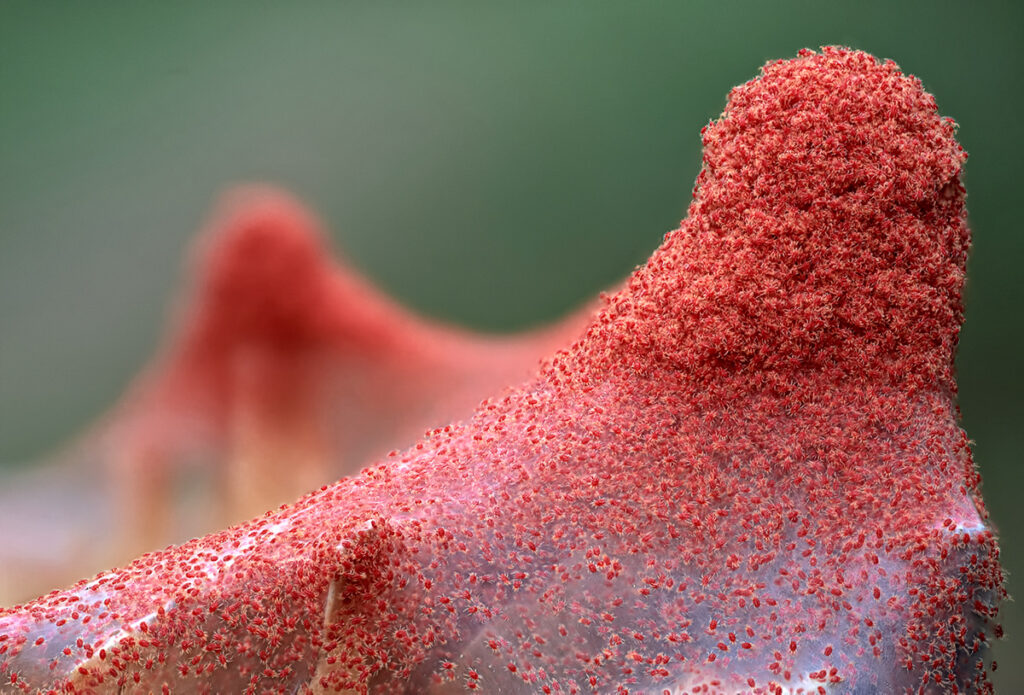
Spider mites are similar to spiders and have a similar size of a pepper grain. They come in yellow, brown, black, and red. These pests inject toxins causing the foliage white dots and remove chlorophyll by sucking on the plant juices. Spider mites cause yellow foliage and then become stippled and dry.
These pests thrive well in dry conditions and multiply quickly. Therefore, forceful everyday spray can control spider mites. Use insecticidal soap or hot pepper wax.
Mealybugs
Mealybugs are flat, wingless insects and are about 1/8 to ¼ inch long. These pests secrete a white powder forming a waxy shell that protects them. Mealybugs cause leaves, branches, and stems from having cottony-looking masses. These pests cause weak growth and suck leaves juices.
In addition, they excrete honeydew that attracts ants. Try to rub off the bugs and wash affected plants parts. Predator insects like parasitic wasps, ladybugs, and lacewings can also control them.
Aphids
Aphids come in peach, black, red, and green. As sucking insects, they feed on the underparts of leaves, spreading disease in the process. They also attract ants with a sticky residue they leave behind. Attract and introduce natural predators like wasps and lady beetles who feed on aphids into your garden. Use an insecticidal soap or wash them off with a strong spray.
Viral Diseases
Insects can spread viral diseases, leading to cupped or deformed foliage with mottled patterns. Your White Hibiscus will lose vigor from this impact. Unfortunately, no cure is available. Destroy and remove infected parts. Aphids and other pests spread diseases and ensure to control them.
Take caution when working in your garden and make sure to use garden gloves or wash hands before touching any plant. Also, ensure you clean your garden tools after working with any plant.
Yellow Leaves
Mature and seedling root rots are a result of several pathogens. The best means of eliminating this issue is to pull up infected plants and discard them. Excellent drainage is crucial for your soil, and ensure it has it.
Impact of Recommended Zones
Plants typically die during winter in some recommended zones. For example, White Hibiscus can die in winter due to poor drainage and wet soils. Again, provide your plant with well-drained soil. Select varieties with one zone colder than your zone if planting in containers. With that, you can mulch heavily and keep the containers in a protected spot outdoors.
Bud Drop
Lack of water and food can cause the buds to fall off your plant. The way out is regular fertilizing and watering.
Alternaria Leaf Spot
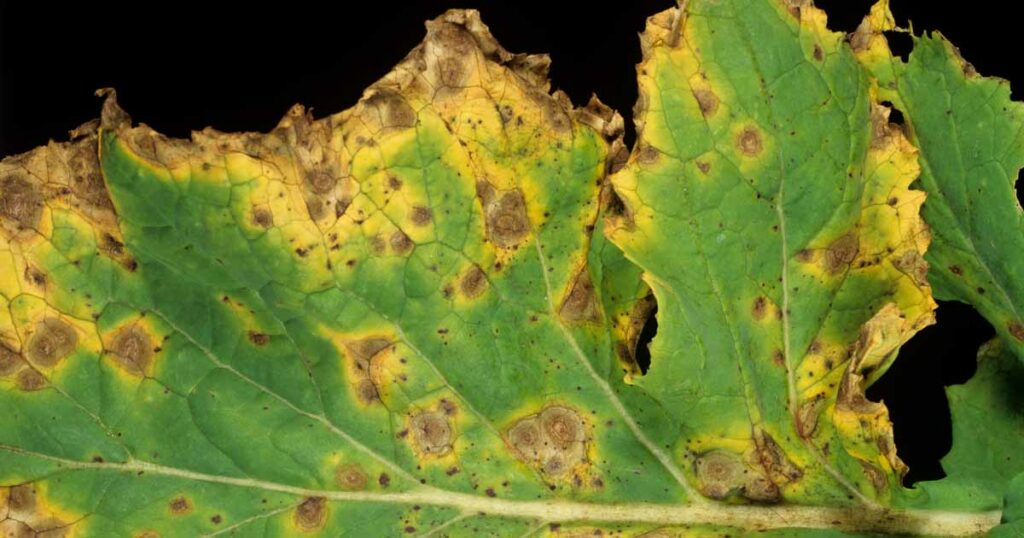
This issue is gray to white center forms with round, small reddish-brown spots along the midrib and on the upper part of the leaves. The stems can wilt with a circle of lesions. The disease gets worse in humid, wet, or warm weather. Avoid watering the foliage. Never work around wet plants and eliminate infected plant parts. In addition, ensure your plant gets plenty of air circulation.
White Hibiscus Treatments and Maintenance
It is virtually simple to care for your White Hibiscus, and you will love the results with beautiful blooming flowers in the active months. You can do many things to help your plant thrive and grow for years to come. Providing your plant with added nutrients through fertilizer is significant in assisting it is blooming to its full potential. Our team has compiled a few crucial tips to follow for proper care of your White Hibiscus.
Check Pest Infestations Constantly
You must ensure no cases of pest infestation by checking on your plant frequently. You can find green, white, or black pests called aphids around the plant’s foliage. Gnats and whiteflies are similar, and you can find them under the leaves. In addition, the buds can have thrips’ eggs. Therefore, ensure no narrow-looking thrips have encroach your plant by checking the buds regularly.
Another problem is the scale, and they are always close to the plant’s leaves, stems, and trunk. Scale like the leaves’ sap and can have soft or hard scales attached to them. They are tiny with a waxy surface. Mealybugs also have a waxy body and are soft. These pests love to suck from White Hibiscus’ leaves, stems, and trunk.
Prune Old Flowers
One of the best care to give your White Hibiscus is to prune the old flowers. As such, it is eliminating the deadhead. Your plant will continue to bloom when you cut off the old flowers before seeds form. The deadheading technique will make your plant look more beautiful while bringing new blooms. Pinch off the old bud as you take the flower stem behind the base. Shears are also perfect for snipping off old flowers if you have them. You may need to remove any dead flowers at once.
A much quicker method is shearing, and you can do it quickly. You only need to cut one-third height of the White Hibiscus when the flowering flush has stopped. Make the cuts above the lead or bud to promote branching. Ensure to eliminate all the plant’s trimmings after cutting to stave off pests and diseases.
Light and Frequent Fertilizer Schedule
Your plant must be on a regular and light fertilizer schedule for optimal development and growth. White Hibiscus loves a balanced fertilizer, about 10-10-10. Release fertilizer slowly four times a year for optimum results. Early winter, middle of summer, after the first bloom, and early spring are best times.
Where to Buy White Hibiscus Seeds Online
Now that you know how White Hibiscus can beautify and add curb appeal to your home, are you ready to plant and grow your White Hibiscus? Finding online retailers is easy if you are ready. You can go here to get started:
Where to Buy Mature White Hibiscus Online
Some of the online retailers that can keep you stocked include:
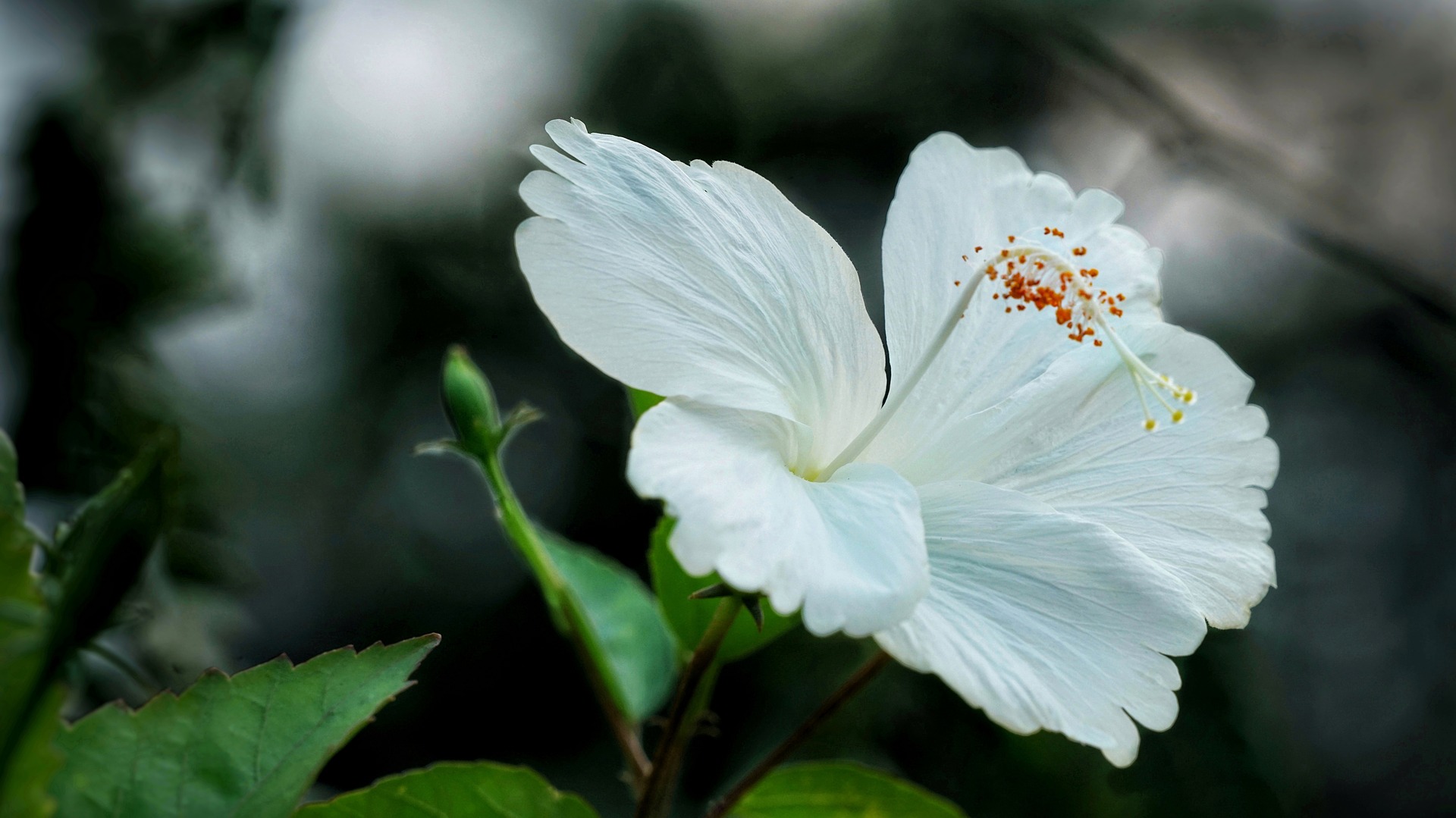
FAQs
Answer: the best recommendation is to prune the plant during the spring when it is no longer dormant and has no appearance of new growth.
Answer: While deadhead is part of a White Hibiscus care schedule, it is not a crucial part of it. Growers perform deadhead for a hibiscus for aesthetic points. Typically, hibiscus’ bloom can fall off it unprompted as they wilt after the plant’s flowers die.
Answer: Yes, they do. As perennials, hibiscus bloom and flower once a year during the summer and spring months.

